 The subtitle of this new collection from Mute, A Beginner's Guide to the Music of Throbbing Gristle,is a fairly accurate description of what the disc provides. The problemwith a group as culturally significant and influential as ThrobbingGristle is that the music is only half the story, and that other halfis what this disc can't provide. Released to coincide with the glut ofThrobbing Gristle reissues and reformations surrounding the cancelledRE~TG event, this disc showed up in bins at the same time as Mutant TG,Mute's pointless collection of tepid remixes. I suppose this disc wascreated for the legions of curious who have read the enthusiastic,worshipful praise heaped on TG in various publications, but have noobvious entry point into the daunting discography of the so-called"wreckers of civilization." To that end, the compiler of this disc (thesuspiciously named Olivier Cormier Ota?o), has done a fairly decent jobof putting together a wide cross-section of TG's recorded output. Allof the major phases of the TG sound are present; the ominous industrialsoundscapes of "Industrial Introduction" and "Cabaret Voltaire;" theagitated, screamed provocations of "We Hate You (Little Girls)" and"Zyklon B Zombie;" the jagged psychedelic mutations of "Dead onArrival" and "Hamburger Lady;" and the proto-techno experimentation of"Distant Dreams, Pt. 2" and "Hot on the Heels of Love." There is adecided emphasis on more-or-less "accessible" material, although with aband as abrasive and uncommercial as TG, accessible is truly a relativeterm. Taken together, the tracks present a good argument for TG asmusical innovators, with a few well-chosen live recordings thatevidences their legendary talent for provocative live performance. Mymain complaint with the CD lies with the packaging. The total lack ofany historical notes or perspectives on TG is strange, especially for arelease purporting to be a Beginner's Guide. It is impossibleto separate TG from their historical and social context; to do so is tomisunderstand the scope of their significance. Further, the band'svisual presentation—in costuming, symbolism, record sleeves and thevarious "reports" and missives—is at least as important as their soundon record. I suppose beginners could seek out this material elsewhere,but would it have killed Mute to reproduce some of it along with thedisc? Adding to the problem is the cover art by Peter Christopherson.While I appreciate its powerfully grotesque, Salo-esquebrutality, it doesn't mesh with the visual strategies of early TGartwork, with its clinical style relating the activities of the bandlike some classified document from the KGB, slyly satirizing andattacking the status quo of music and culture. I can guardedlyrecommend The Taste of TG for its musical content, but for beginners, further study will be required.
The subtitle of this new collection from Mute, A Beginner's Guide to the Music of Throbbing Gristle,is a fairly accurate description of what the disc provides. The problemwith a group as culturally significant and influential as ThrobbingGristle is that the music is only half the story, and that other halfis what this disc can't provide. Released to coincide with the glut ofThrobbing Gristle reissues and reformations surrounding the cancelledRE~TG event, this disc showed up in bins at the same time as Mutant TG,Mute's pointless collection of tepid remixes. I suppose this disc wascreated for the legions of curious who have read the enthusiastic,worshipful praise heaped on TG in various publications, but have noobvious entry point into the daunting discography of the so-called"wreckers of civilization." To that end, the compiler of this disc (thesuspiciously named Olivier Cormier Ota?o), has done a fairly decent jobof putting together a wide cross-section of TG's recorded output. Allof the major phases of the TG sound are present; the ominous industrialsoundscapes of "Industrial Introduction" and "Cabaret Voltaire;" theagitated, screamed provocations of "We Hate You (Little Girls)" and"Zyklon B Zombie;" the jagged psychedelic mutations of "Dead onArrival" and "Hamburger Lady;" and the proto-techno experimentation of"Distant Dreams, Pt. 2" and "Hot on the Heels of Love." There is adecided emphasis on more-or-less "accessible" material, although with aband as abrasive and uncommercial as TG, accessible is truly a relativeterm. Taken together, the tracks present a good argument for TG asmusical innovators, with a few well-chosen live recordings thatevidences their legendary talent for provocative live performance. Mymain complaint with the CD lies with the packaging. The total lack ofany historical notes or perspectives on TG is strange, especially for arelease purporting to be a Beginner's Guide. It is impossibleto separate TG from their historical and social context; to do so is tomisunderstand the scope of their significance. Further, the band'svisual presentation—in costuming, symbolism, record sleeves and thevarious "reports" and missives—is at least as important as their soundon record. I suppose beginners could seek out this material elsewhere,but would it have killed Mute to reproduce some of it along with thedisc? Adding to the problem is the cover art by Peter Christopherson.While I appreciate its powerfully grotesque, Salo-esquebrutality, it doesn't mesh with the visual strategies of early TGartwork, with its clinical style relating the activities of the bandlike some classified document from the KGB, slyly satirizing andattacking the status quo of music and culture. I can guardedlyrecommend The Taste of TG for its musical content, but for beginners, further study will be required.
Give us an hour, we'll give you music to remember. This week we bring you an episode with brand new music from Softcult, Jim Rafferty, karen vogt, Ex-Easter Island Head, Jon Collin, James Devane, Garth Erasmus, Gary Wilson, and K. Freund, plus some music from the archives from Goldblum, Rachel Goswell, Roy Montgomery. Rubber ducks and a live duck photo from Matthew in the UK. Get involved: subscribe, review, rate, share with your friends, send images! |



 Now represents the first new music recorded by Throbbing Gristlein over two decades. It was available in a limited edition of 500 CDsand LPs at the recent live recording session event in London, which wasdone in lieu of the cancelled RE~TG weekend festival. The disc consistsof four lengthy tracks, which appear in shortened form on the LP. It'sfascinating to hear new material by TG, after twenty years of listeningto each member's musical evolution with their own projects—Chris andCosey, Psychic TV and Coil. It is immediately apparent listening to Nowthat each member has brought more experience and maturity to the table,and are not content merely to rehash or resurrect the familiar oldstrategies of the original incarnation of TG. In fact, Now fitsquite nicely into the current underground scene. The music is not milesaway from the new wave of young, TG-influenced acts like Black Dice andWolf Eyes. "X-Ray" rides in on a cold tractor beam, canceling allthought with its refrigerator drones and oscillating distortion. It'ssomewhat similar to early TG material, but it's also refreshingly new,taking in all of the developments in noise, experimental and industrialmusic in the last 20 years. "Splitting Sky" is my favorite of the newtracks, a 12-minute dub-influenced journey into the dark heart ofelectro, with Genesis providing gravelly, mutated vocals. The songinvokes the looming figure of Detroit Techno, viewed through thetransgressive lens of four of the most talented luminaries ofunderground music and culture. Chris, Cosey, Peter and Genesis seemwilling to confront their legendary status head-on, and confound anyexpectations or controversy that their reunion may have sparked off.Some may be disappointed by the relative tameness of the material on Now,but could anyone really have expected them to recapture the fierce,political aggression of their earlier material? That might have been alittle calculated and pathetic coming from a group of musicians nowpushing 18. It's tempting to hear echoes of recent Coil and Chris andCosey (or Carter-Tutti?) music in the mix on Now, and it'scertainly not an unwarranted comparison, considering thehallucinogenic, distended disco-dub of "Splitting Sky" and theatmospheric jazz of "Almost Like This." The stand-up bass andxylophone, and Genesis' tortured croon on "Almost Like This" deliverson the promise of their parody of Easy Listening LPs on the 20 Jazz Funk Greatssleeve. The fourth track, "How Do You Deal?" comes the closest torecreating the dark urgency of early TG live performances, with itsdistorted basslines and metallic guitar swipes, Genesis screaming:"Life is a vacuum pump/Strangeness/Sucking in/Wasted time/You can'twin." This dystopian negativity is a refreshing salve to the hokeypersonal-empowerment sermons that Genesis has been boring us with forthe past twenty years. The song builds to a series of noisy,apocalyptic crescendos that each try to outdo the last for sheerindustrial-strength aggression. Whether or where exactly Nowfits into the TG canon could be discussed and argued at length, but inthe meantime, I'm going to enjoy listening to it. It's a trulyimpressive record by a band that until recently seemed like the leastlikely candidates for a reunion.
Now represents the first new music recorded by Throbbing Gristlein over two decades. It was available in a limited edition of 500 CDsand LPs at the recent live recording session event in London, which wasdone in lieu of the cancelled RE~TG weekend festival. The disc consistsof four lengthy tracks, which appear in shortened form on the LP. It'sfascinating to hear new material by TG, after twenty years of listeningto each member's musical evolution with their own projects—Chris andCosey, Psychic TV and Coil. It is immediately apparent listening to Nowthat each member has brought more experience and maturity to the table,and are not content merely to rehash or resurrect the familiar oldstrategies of the original incarnation of TG. In fact, Now fitsquite nicely into the current underground scene. The music is not milesaway from the new wave of young, TG-influenced acts like Black Dice andWolf Eyes. "X-Ray" rides in on a cold tractor beam, canceling allthought with its refrigerator drones and oscillating distortion. It'ssomewhat similar to early TG material, but it's also refreshingly new,taking in all of the developments in noise, experimental and industrialmusic in the last 20 years. "Splitting Sky" is my favorite of the newtracks, a 12-minute dub-influenced journey into the dark heart ofelectro, with Genesis providing gravelly, mutated vocals. The songinvokes the looming figure of Detroit Techno, viewed through thetransgressive lens of four of the most talented luminaries ofunderground music and culture. Chris, Cosey, Peter and Genesis seemwilling to confront their legendary status head-on, and confound anyexpectations or controversy that their reunion may have sparked off.Some may be disappointed by the relative tameness of the material on Now,but could anyone really have expected them to recapture the fierce,political aggression of their earlier material? That might have been alittle calculated and pathetic coming from a group of musicians nowpushing 18. It's tempting to hear echoes of recent Coil and Chris andCosey (or Carter-Tutti?) music in the mix on Now, and it'scertainly not an unwarranted comparison, considering thehallucinogenic, distended disco-dub of "Splitting Sky" and theatmospheric jazz of "Almost Like This." The stand-up bass andxylophone, and Genesis' tortured croon on "Almost Like This" deliverson the promise of their parody of Easy Listening LPs on the 20 Jazz Funk Greatssleeve. The fourth track, "How Do You Deal?" comes the closest torecreating the dark urgency of early TG live performances, with itsdistorted basslines and metallic guitar swipes, Genesis screaming:"Life is a vacuum pump/Strangeness/Sucking in/Wasted time/You can'twin." This dystopian negativity is a refreshing salve to the hokeypersonal-empowerment sermons that Genesis has been boring us with forthe past twenty years. The song builds to a series of noisy,apocalyptic crescendos that each try to outdo the last for sheerindustrial-strength aggression. Whether or where exactly Nowfits into the TG canon could be discussed and argued at length, but inthe meantime, I'm going to enjoy listening to it. It's a trulyimpressive record by a band that until recently seemed like the leastlikely candidates for a reunion. 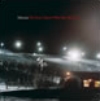 Following his self-recorded O+EP, Christophe Stoll aka Nitrada decided to invite guest musicians fora more collaborative approach on his debut album. The resultingcollection of songs is a varied and intense soul-searching experimentdrenched in ambience and trickery. There is an almost uncomfortablefeeling of anticipation that surrounds each song, like waiting forsomeone to flick on the lights and discover what was hidden before. Thelights do get switched on in every song, so the release that follows isalso heard, and it's a complex emotional exchange that I've never heardcrafted and executed quite so expertly. Literally I was on the edge ofmy seat listening to most songs. Stoll has used the formula to createsomething truly wonderful that, while not entirely unique, is full oflife and songs worth listening to. Where the first track is a bitmellow and vacant, with very little going on, each subsequent track hasa strong melody, catchy beats, and a steady build and deliver process."Everthing Is Not Alright" has a classic but muted dance beat and fadedfield voice samples to start. When the echoed keyboards join in,suddenly there's a new life to the song, and the beat changes slightlybut accordingly to compensate. The songs evolve to become betterstructures as they progress. Vocalists provide meaning and variety,becoming true practitioners of the collective vision. Even the quaintrecitation on the title track has some umph to it, and adds aninteresting new taste. Although Nitrada is a fairly new artist, he hasa classic vision and concept, and as his debut full-length shows it'snot a bad combination. -
Following his self-recorded O+EP, Christophe Stoll aka Nitrada decided to invite guest musicians fora more collaborative approach on his debut album. The resultingcollection of songs is a varied and intense soul-searching experimentdrenched in ambience and trickery. There is an almost uncomfortablefeeling of anticipation that surrounds each song, like waiting forsomeone to flick on the lights and discover what was hidden before. Thelights do get switched on in every song, so the release that follows isalso heard, and it's a complex emotional exchange that I've never heardcrafted and executed quite so expertly. Literally I was on the edge ofmy seat listening to most songs. Stoll has used the formula to createsomething truly wonderful that, while not entirely unique, is full oflife and songs worth listening to. Where the first track is a bitmellow and vacant, with very little going on, each subsequent track hasa strong melody, catchy beats, and a steady build and deliver process."Everthing Is Not Alright" has a classic but muted dance beat and fadedfield voice samples to start. When the echoed keyboards join in,suddenly there's a new life to the song, and the beat changes slightlybut accordingly to compensate. The songs evolve to become betterstructures as they progress. Vocalists provide meaning and variety,becoming true practitioners of the collective vision. Even the quaintrecitation on the title track has some umph to it, and adds aninteresting new taste. Although Nitrada is a fairly new artist, he hasa classic vision and concept, and as his debut full-length shows it'snot a bad combination. - If I were to see this second album by Edison Woods in a record store, Iwould buy it based on the album title or song titles alone — a processthat has served me well, despite the occasional misses ("Bowling forFuckers" sounded like a good song, but I was wrong). Even though theband name sounds like a character from a soap opera or Everwood, thisBrooklyn-based band is far from a caricature or a parody of itself. Seven Principleswas released in October last year, but I just got around to listeningto it, and it floored me. Led by sultry vocalist andmulti-instrumentalist Julia Frodahl, the band is one that carefullyconsiders every aspect of their being, like the placement of a realfeather under the CD tray. More of an artistic collective than a band,their music is still paralyzing in its raw beauty, and the simplicityof its design. The arrangements are sparse, with most songs featuringone main instrument and several others added almost as accents only.Guiding it all is Frodahl's voice and poetic lyrics on a variety ofsubjects where everyone can find something personal. "So now let mego," she sings several times on the opening track "Secrets," andhonestly it's easy to understand why someone wouldn't want to just fromthe way she sings it. Empassioned, naked, and full of emotion, it's themark of a person who knows how to love. Even when she warbles away fromthe melody a little ("Like a Jewel"), it sounds so assured and plannedthat it doesn't grate like it would from most other artists. As thealbum progresses, the songs venture more into jam territory, as theband members let it out a bit and improvise for effect. On the fewsongs where there are no vocals, the songs still soar, unencumbered byanything that might bring them down. Edison Woods are an impressiveband with a unique sound, and this album shows there's plenty ofstrengths and variations to keep them going for years to come.
If I were to see this second album by Edison Woods in a record store, Iwould buy it based on the album title or song titles alone — a processthat has served me well, despite the occasional misses ("Bowling forFuckers" sounded like a good song, but I was wrong). Even though theband name sounds like a character from a soap opera or Everwood, thisBrooklyn-based band is far from a caricature or a parody of itself. Seven Principleswas released in October last year, but I just got around to listeningto it, and it floored me. Led by sultry vocalist andmulti-instrumentalist Julia Frodahl, the band is one that carefullyconsiders every aspect of their being, like the placement of a realfeather under the CD tray. More of an artistic collective than a band,their music is still paralyzing in its raw beauty, and the simplicityof its design. The arrangements are sparse, with most songs featuringone main instrument and several others added almost as accents only.Guiding it all is Frodahl's voice and poetic lyrics on a variety ofsubjects where everyone can find something personal. "So now let mego," she sings several times on the opening track "Secrets," andhonestly it's easy to understand why someone wouldn't want to just fromthe way she sings it. Empassioned, naked, and full of emotion, it's themark of a person who knows how to love. Even when she warbles away fromthe melody a little ("Like a Jewel"), it sounds so assured and plannedthat it doesn't grate like it would from most other artists. As thealbum progresses, the songs venture more into jam territory, as theband members let it out a bit and improvise for effect. On the fewsongs where there are no vocals, the songs still soar, unencumbered byanything that might bring them down. Edison Woods are an impressiveband with a unique sound, and this album shows there's plenty ofstrengths and variations to keep them going for years to come. 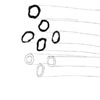 Here's another gem of miniature electro acoustics from Bowindo, the Italian label that, within only a few years of activity, has become a bright beacon on the Mediterranean front, producing a modest string of thoroughly uncompromising releases, all of which will be featured on the Brain in coming weeks.
Here's another gem of miniature electro acoustics from Bowindo, the Italian label that, within only a few years of activity, has become a bright beacon on the Mediterranean front, producing a modest string of thoroughly uncompromising releases, all of which will be featured on the Brain in coming weeks. Although I've still found much to enjoy on the new Fennesz record, Ihad to sympathize with Lucas' review in last week's Brain. I too havebeen struck by just how much of the artist's output seems to relysquarely on the simple act of obscuring his sound sources. Fennesz'scontinuing reinvention of shoegaze doesthrow his guitar to the front of the mix, but places it immediately inthe service of the walls of distortion and powerbook fuckery thatexist, it would seem, only to inflate the instrument into theshimmering pools of sound-dust that coat his recent work. Funny thatthe guitar, the instrument that has come to define Fennesz's style andgrant him immediate mention anytime stringed instruments go digital(this being no exception), has been the one thing to suffer most in hiswork. What I think Lucas was getting at is that all of the opulence,all the "dressing" on a Fennesz record, has taken the place oftechnical innovation and, sometimes, even compositional discipline. Andwhile I find both parties equally irresistible, I can't help but thinkthat Fennesz has taken guitar, for the electronic medium, whereStereolab took it within the rock/pop domain, their interchangeabledriving two-chord anthems now as predictable as the Viennese's grainy,melancholic churn. Mitchell Akiyama is a Canadian musician oftengranted the Fennesz comparison because of the way he works through asimilar method of sound disintegration, a practice made explicit in thetitle of his last release as one half of Desormais, Iambrokenandremade....Lucas liked that record a lot, the reason (I gather) being thecomplexity and risky nature of duo's rigorous reassembling process.Akiyama and Joshua Treble (whose solo disc on Intr_version is anotherrecent wonder) took what would have been impressive lines of nakedguitar, piano, and percussion and set about an intricate splicingmethod, reshaping their parts into elegant, labyrinthine hulks of soundthat opened up onto the process of their construction (or previousdeconstruction) but were also propelled by a new logic, bigger than anyone constituent. Akiyama's newest solo release doesn't pack quite theepic sweep of that prior work, but it does show a similar interest inallowing each instrument a unique and resonant spot within the soundpalette, regardless of the digital manipulations applied. If Night is a Weedcould be Akiyama's vision of chamber-glitch, the music growing out ofminimalist trumpet, piano and cello patterns, lent enough room to lettheir own often rigorous compositions show. The production keepscertain lines tactile and wonderfully present while others bend wildlyinto sunny aerials, this time glimpsed within quiet door and windowframes rather than Iambroken's jagged, industrial-scaledfoundations. The majority of the tracks feature a surprising opennessin which instruments engage in call-and-response with the effects-ladenghosts of themselves. Subtle builds lead from barren piano and cellointeractions to carefully-melded noise ascensions. One piece, dedicatedto Steve Reich, beautifully suggests his Music for Large Ensemble,its clipped, cyclical melodies rendered weightless by only a finedusting of static. That Akiyama can so readily duplicate his elder'sdelicate technique, place (even create) it within the record's"manipulated" context, and not have the result sound tired by eitherera's standards is testament alone to the beauty of this record.
Although I've still found much to enjoy on the new Fennesz record, Ihad to sympathize with Lucas' review in last week's Brain. I too havebeen struck by just how much of the artist's output seems to relysquarely on the simple act of obscuring his sound sources. Fennesz'scontinuing reinvention of shoegaze doesthrow his guitar to the front of the mix, but places it immediately inthe service of the walls of distortion and powerbook fuckery thatexist, it would seem, only to inflate the instrument into theshimmering pools of sound-dust that coat his recent work. Funny thatthe guitar, the instrument that has come to define Fennesz's style andgrant him immediate mention anytime stringed instruments go digital(this being no exception), has been the one thing to suffer most in hiswork. What I think Lucas was getting at is that all of the opulence,all the "dressing" on a Fennesz record, has taken the place oftechnical innovation and, sometimes, even compositional discipline. Andwhile I find both parties equally irresistible, I can't help but thinkthat Fennesz has taken guitar, for the electronic medium, whereStereolab took it within the rock/pop domain, their interchangeabledriving two-chord anthems now as predictable as the Viennese's grainy,melancholic churn. Mitchell Akiyama is a Canadian musician oftengranted the Fennesz comparison because of the way he works through asimilar method of sound disintegration, a practice made explicit in thetitle of his last release as one half of Desormais, Iambrokenandremade....Lucas liked that record a lot, the reason (I gather) being thecomplexity and risky nature of duo's rigorous reassembling process.Akiyama and Joshua Treble (whose solo disc on Intr_version is anotherrecent wonder) took what would have been impressive lines of nakedguitar, piano, and percussion and set about an intricate splicingmethod, reshaping their parts into elegant, labyrinthine hulks of soundthat opened up onto the process of their construction (or previousdeconstruction) but were also propelled by a new logic, bigger than anyone constituent. Akiyama's newest solo release doesn't pack quite theepic sweep of that prior work, but it does show a similar interest inallowing each instrument a unique and resonant spot within the soundpalette, regardless of the digital manipulations applied. If Night is a Weedcould be Akiyama's vision of chamber-glitch, the music growing out ofminimalist trumpet, piano and cello patterns, lent enough room to lettheir own often rigorous compositions show. The production keepscertain lines tactile and wonderfully present while others bend wildlyinto sunny aerials, this time glimpsed within quiet door and windowframes rather than Iambroken's jagged, industrial-scaledfoundations. The majority of the tracks feature a surprising opennessin which instruments engage in call-and-response with the effects-ladenghosts of themselves. Subtle builds lead from barren piano and cellointeractions to carefully-melded noise ascensions. One piece, dedicatedto Steve Reich, beautifully suggests his Music for Large Ensemble,its clipped, cyclical melodies rendered weightless by only a finedusting of static. That Akiyama can so readily duplicate his elder'sdelicate technique, place (even create) it within the record's"manipulated" context, and not have the result sound tired by eitherera's standards is testament alone to the beauty of this record. 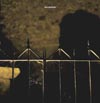 Late at night in the USA there's this syndicated talk show all over AM radio called Coast to Coast AM.It's all about the paranormal: making contact with UFOs, the dead andbeyond, and other mystic things that science mysteriously avoids.Perhaps some of it is true, perhaps it's all a hoax, but it sure makesfor some addictive entertainment. For the latest Bass Communionrelease, Steven Wilson has constructed a series of amazing soniclandscapes inspired by Konstantin Raudive's attempts in the 1970s torecord ghosts. Similar to Coast to Coast AM, Wilson could beeither completely serious about reinterpreting ectoplasmic audio or itcould just be a hoax in its own way. Either way, the output isphenomenal and undoubtedly multidimensional. Wilson's interpretationsof the dead are constructed from munching the sounds of choral voices,scratchy old vinyl, wind, piano, guitar, flute, and variousunrecognizable things into a dense soup of thunderous roars, cracklesand landscapes that are rich with visual imagery. Speakers warble,objects in the room vibrate, earwax loosens, roommates come wanderingin, but nothing can disturb the serenity. Of course, it also helps thatWilson's been hanging out with Jonathan Coleclough and Colin Potterrecently, two of the Jedi Masters of modern drone. What Wilson bringsto the drones is a rich musical history, as he's "played" music inbands like Porcupine Tree and No Man. Calling this album a work ofdrones is somewhat limiting, as melodic movements permeate the disc.Whether it's a sparse one-note melody on "Part 1" or symphonic-likegrandness on "Part 4," never does the melody simply sit idly andsustain. The music can be so quiet however, it's effective to listeneither with headphones or high volumes in complete darkness. Ideally, avisual component to be projected on a large screen with superb digitalsound would be a great place to experience this amazing album, but fornow, we can lie back and dream it ourselves.
Late at night in the USA there's this syndicated talk show all over AM radio called Coast to Coast AM.It's all about the paranormal: making contact with UFOs, the dead andbeyond, and other mystic things that science mysteriously avoids.Perhaps some of it is true, perhaps it's all a hoax, but it sure makesfor some addictive entertainment. For the latest Bass Communionrelease, Steven Wilson has constructed a series of amazing soniclandscapes inspired by Konstantin Raudive's attempts in the 1970s torecord ghosts. Similar to Coast to Coast AM, Wilson could beeither completely serious about reinterpreting ectoplasmic audio or itcould just be a hoax in its own way. Either way, the output isphenomenal and undoubtedly multidimensional. Wilson's interpretationsof the dead are constructed from munching the sounds of choral voices,scratchy old vinyl, wind, piano, guitar, flute, and variousunrecognizable things into a dense soup of thunderous roars, cracklesand landscapes that are rich with visual imagery. Speakers warble,objects in the room vibrate, earwax loosens, roommates come wanderingin, but nothing can disturb the serenity. Of course, it also helps thatWilson's been hanging out with Jonathan Coleclough and Colin Potterrecently, two of the Jedi Masters of modern drone. What Wilson bringsto the drones is a rich musical history, as he's "played" music inbands like Porcupine Tree and No Man. Calling this album a work ofdrones is somewhat limiting, as melodic movements permeate the disc.Whether it's a sparse one-note melody on "Part 1" or symphonic-likegrandness on "Part 4," never does the melody simply sit idly andsustain. The music can be so quiet however, it's effective to listeneither with headphones or high volumes in complete darkness. Ideally, avisual component to be projected on a large screen with superb digitalsound would be a great place to experience this amazing album, but fornow, we can lie back and dream it ourselves.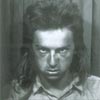 For those trying to navigate the sea of material unearthed by RichardH. Kirk, it's worth noting that unlike the simultaneous reissue ofSandoz' Digital Lifeforms, Earlier/Later features a monsterous 32 of 33 tracks previously available to the public. Additionally, unlike the Unreleased Projectscompilations, the music is all presented -as- Richard H. Kirk andironically sounds more like a mix tape than a collection of recordingsunder various aliases. All material here was recorded during activeperiods of Cabaret Voltaire, between 1974 and 1989, and therefore, muchof the music resembles CV material from repsected years. Recorded tocassette tape and mostly forgotten, the fidelity is showing a littleware. For any CV fans who remember riding public transportation homefrom the record shop listening to shoddy cassette releases on awalkman, the sound is remarkably familiar, and not unwelcome. Thecollection opens with the Later disc, and tracks from the "bigfunk" era (arguably 1982-1986), popularly characterized by beefy drummachines, electronic cowbell, and floods of vocal samples. The chunky10+ minute "Never Lose Your Shadow" is a pleasant shock, as it featuresa rare appearance of Kirk's singing voice atop music that could haveeasily graced The Crackdown, as is the cover of Can's "I Want More," another vocal tune which fits more into the early techno post-Codeperiod, where deep electronic bass sounds and smooth synths flourishwith subtle, faster-paced drum machines. While tracks like 1985's "OnFire" resemble what could easily be an early prototype of CV's"Sleepwalk," the immedtiately following "Digital Globe," could be anearly prototype of 1989's "Hypnotised." Latin piano & Miami bassstyle techno is the primary influence of 1988/89's "Latin/MYBM," apeppy track which is about nothing other than fun, but it's immediatelyfollowed by "Martyrs of Palestine," a track which is probably eveneerier in 2004 than its original release on a Rough Trade 12" in 1986.It's easy to speculate what kept these tracks buried for so long—eithercontractual obligations to EMI or Virgin, Kirk's devotion to the CVumbrella, or his personal choice—the music's availability now for a diehard CV/Kirk fan is far more important. The second disc, Earlieris 20 tracks of early destruction, mostly between 1974 and 1981,challenging the institution of music with tape cut ups, non-musicalsounds, distorted spoken samples, abrasive saxophone, and even atrashed piano. The tracks here are fantastic eye-openers, seamlesslythreadded like a primitive mix tape where the compiler was tooimpatient to let the opening and closing silence be heard. Beats arecreated by hand cut loops and delayed effects rather than drum machineson earlier tracks like 1974's "Cosmic Override 1," and 1975's brief"Radio Silence," while the infrequent inclusion of a track from themid-1980s, like 1985's "International Smashface Detective Theme," and"All Nationalities," are not typical beat fanfare, but more likevarious thematic instrumental CV album tracks from the time. Kirk'sreluctance to new technologies and letting go of the noise is apparentin the odd track from 1981, "Immaculate Riot," where for one of thefirst times, the bridge is between the noisier earlier stages of theKirk/CV timeline and the early beat period is strikingly clear. Alongwith the other recent collections of unreleased material, Earlier/Later is an essential key to the history of Kirk and Cabaret Voltaire. -
For those trying to navigate the sea of material unearthed by RichardH. Kirk, it's worth noting that unlike the simultaneous reissue ofSandoz' Digital Lifeforms, Earlier/Later features a monsterous 32 of 33 tracks previously available to the public. Additionally, unlike the Unreleased Projectscompilations, the music is all presented -as- Richard H. Kirk andironically sounds more like a mix tape than a collection of recordingsunder various aliases. All material here was recorded during activeperiods of Cabaret Voltaire, between 1974 and 1989, and therefore, muchof the music resembles CV material from repsected years. Recorded tocassette tape and mostly forgotten, the fidelity is showing a littleware. For any CV fans who remember riding public transportation homefrom the record shop listening to shoddy cassette releases on awalkman, the sound is remarkably familiar, and not unwelcome. Thecollection opens with the Later disc, and tracks from the "bigfunk" era (arguably 1982-1986), popularly characterized by beefy drummachines, electronic cowbell, and floods of vocal samples. The chunky10+ minute "Never Lose Your Shadow" is a pleasant shock, as it featuresa rare appearance of Kirk's singing voice atop music that could haveeasily graced The Crackdown, as is the cover of Can's "I Want More," another vocal tune which fits more into the early techno post-Codeperiod, where deep electronic bass sounds and smooth synths flourishwith subtle, faster-paced drum machines. While tracks like 1985's "OnFire" resemble what could easily be an early prototype of CV's"Sleepwalk," the immedtiately following "Digital Globe," could be anearly prototype of 1989's "Hypnotised." Latin piano & Miami bassstyle techno is the primary influence of 1988/89's "Latin/MYBM," apeppy track which is about nothing other than fun, but it's immediatelyfollowed by "Martyrs of Palestine," a track which is probably eveneerier in 2004 than its original release on a Rough Trade 12" in 1986.It's easy to speculate what kept these tracks buried for so long—eithercontractual obligations to EMI or Virgin, Kirk's devotion to the CVumbrella, or his personal choice—the music's availability now for a diehard CV/Kirk fan is far more important. The second disc, Earlieris 20 tracks of early destruction, mostly between 1974 and 1981,challenging the institution of music with tape cut ups, non-musicalsounds, distorted spoken samples, abrasive saxophone, and even atrashed piano. The tracks here are fantastic eye-openers, seamlesslythreadded like a primitive mix tape where the compiler was tooimpatient to let the opening and closing silence be heard. Beats arecreated by hand cut loops and delayed effects rather than drum machineson earlier tracks like 1974's "Cosmic Override 1," and 1975's brief"Radio Silence," while the infrequent inclusion of a track from themid-1980s, like 1985's "International Smashface Detective Theme," and"All Nationalities," are not typical beat fanfare, but more likevarious thematic instrumental CV album tracks from the time. Kirk'sreluctance to new technologies and letting go of the noise is apparentin the odd track from 1981, "Immaculate Riot," where for one of thefirst times, the bridge is between the noisier earlier stages of theKirk/CV timeline and the early beat period is strikingly clear. Alongwith the other recent collections of unreleased material, Earlier/Later is an essential key to the history of Kirk and Cabaret Voltaire. - 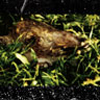 Although the first track might suggest a sound that is going to becontinually deadly and menacing, the whole of this record ends upsmelling of atmosphere and deliberation. "Let's See Who's Here andWho's Not" kicks Obedience Cutsoff with a shot of cocaine and too much pornography: the band soundstruly frightening behind their roar of percussion madness and feedbackglory and the vocalist does nothing short of conjuring up images ofdomestic violence powered by unhinged anger. There's absolutely norhythmic pulse to be found anywhere, there is no melody, and whateverlyrics are being spouted off are anything but intelligible, but theforce of Hair Police's delivery is attention-grabbing enough to keepvolume soaring and my Windbreaker at my side. Expecting another dose ofmeth-fuelled hate, I braced myself for "Obedience Cuts" and wassurprisingly let down its brevity and lack of hair-raising assaultvalue. Suddenly the trio of Robert Beatty, Mike Connelly, and TrevorTremaine descended into the pits of their stomachs and began exploringthe inner-workings of their lower intenstine. Apparently the band hasbeen eating military equipment, pots and pans, and radars because themajority of the next couple of tracks are ruled by metallic jumbles,approaching aircraft, and sirens warning the world of nuclear fallout.The seven minute "Bee Scrape" might feature some high-frequency blastsof whining pipes and the rumbling of human souls being digested byunholy demons, but the attack is nowhere near as vicious as the firsttrack had promised me. The rhythms simply aren't leaving bruises likethey should and so I sit back and enjoy the chaos instead of getting upand tearing my room apart with an axe and chainsaw. "The Empty Socket"rounds out 5 tracks of well-organized noise with a continuum of gongstrikes and dead animals flopping about in water. And then I'm greetedby the promise of snare-drum molestation when the pounding of "OpenBody" begins... and I am satisfied by its sadism. Though it be short,the absolutely mindless gurgle of voice and feedback manages tocoaelesce into a satisfyingly destructive explosion. "Full of Guts" and"Skull Mold" round the album out with a combination of the nearcollage-like "quiet" tracks and the raging homocidal mania of theabusive moments. "Full of Guts" is a particularly disturbing trackwhere the vocalist yells through what must be an underground tunnel,ranting about who knows what but sounding absolutely torn betweenhimself and his hunger for all things chaotic. I can only imagine somemuscular and sweating man dressed in oiled clothing and marked by scarspunching the walls around him until the whole structure he's containedin collapses about him and crushes is head in with a satisfying crunch.I've heard heavier and louder albums, but I can't think of anotherrecord that is anywhere near as disturbing.
Although the first track might suggest a sound that is going to becontinually deadly and menacing, the whole of this record ends upsmelling of atmosphere and deliberation. "Let's See Who's Here andWho's Not" kicks Obedience Cutsoff with a shot of cocaine and too much pornography: the band soundstruly frightening behind their roar of percussion madness and feedbackglory and the vocalist does nothing short of conjuring up images ofdomestic violence powered by unhinged anger. There's absolutely norhythmic pulse to be found anywhere, there is no melody, and whateverlyrics are being spouted off are anything but intelligible, but theforce of Hair Police's delivery is attention-grabbing enough to keepvolume soaring and my Windbreaker at my side. Expecting another dose ofmeth-fuelled hate, I braced myself for "Obedience Cuts" and wassurprisingly let down its brevity and lack of hair-raising assaultvalue. Suddenly the trio of Robert Beatty, Mike Connelly, and TrevorTremaine descended into the pits of their stomachs and began exploringthe inner-workings of their lower intenstine. Apparently the band hasbeen eating military equipment, pots and pans, and radars because themajority of the next couple of tracks are ruled by metallic jumbles,approaching aircraft, and sirens warning the world of nuclear fallout.The seven minute "Bee Scrape" might feature some high-frequency blastsof whining pipes and the rumbling of human souls being digested byunholy demons, but the attack is nowhere near as vicious as the firsttrack had promised me. The rhythms simply aren't leaving bruises likethey should and so I sit back and enjoy the chaos instead of getting upand tearing my room apart with an axe and chainsaw. "The Empty Socket"rounds out 5 tracks of well-organized noise with a continuum of gongstrikes and dead animals flopping about in water. And then I'm greetedby the promise of snare-drum molestation when the pounding of "OpenBody" begins... and I am satisfied by its sadism. Though it be short,the absolutely mindless gurgle of voice and feedback manages tocoaelesce into a satisfyingly destructive explosion. "Full of Guts" and"Skull Mold" round the album out with a combination of the nearcollage-like "quiet" tracks and the raging homocidal mania of theabusive moments. "Full of Guts" is a particularly disturbing trackwhere the vocalist yells through what must be an underground tunnel,ranting about who knows what but sounding absolutely torn betweenhimself and his hunger for all things chaotic. I can only imagine somemuscular and sweating man dressed in oiled clothing and marked by scarspunching the walls around him until the whole structure he's containedin collapses about him and crushes is head in with a satisfying crunch.I've heard heavier and louder albums, but I can't think of anotherrecord that is anywhere near as disturbing. 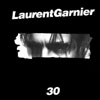 For the most part, full-length techno albums suffer from two fatalflaws. They either sound like a slapped-together 12" singles collectionor they shed harsh light on the weaknesses of the producer outside oftheir 4/4 forte. Reissued this year, 30,Garnier's 1997 artist album, dodges both bullets with a balancedassortment of dancefloor killers and bedroom groovers. This statementshould come as no surprise to fans of his F Communications label, whichboasts countless releases from this former Hacienda DJ along with otheracclaimed dance acts such as Llorca, Mr. Oizo, and Jori Hulkkonen. Thestorming yet funky "Flashback" recalls acid house-era Psychic TV withits dominating bassline and repetitive echoey vocals. "Sweet Mellow D"has a certain Detroit charm, indulging in nearly four minutes of TB-303bass and syrupy pads before the kick pattern emerges, only to drop inand out on Garnier's whim. On "The Hoe" Garnier lets a little humorinto the mix, a quality that is uncharacteristic of most technoproducers. What makes this album worthwhile is the inclusion of theclassic "Crispy Bacon," an acidic warehouse stomper that both technoenthusiasts and DJ newbies alike should have in their crates. As Mutecontinues to reissue albums from industrial and experimental pioneers,I find it refreshing to see the same treatment being given to techno.
For the most part, full-length techno albums suffer from two fatalflaws. They either sound like a slapped-together 12" singles collectionor they shed harsh light on the weaknesses of the producer outside oftheir 4/4 forte. Reissued this year, 30,Garnier's 1997 artist album, dodges both bullets with a balancedassortment of dancefloor killers and bedroom groovers. This statementshould come as no surprise to fans of his F Communications label, whichboasts countless releases from this former Hacienda DJ along with otheracclaimed dance acts such as Llorca, Mr. Oizo, and Jori Hulkkonen. Thestorming yet funky "Flashback" recalls acid house-era Psychic TV withits dominating bassline and repetitive echoey vocals. "Sweet Mellow D"has a certain Detroit charm, indulging in nearly four minutes of TB-303bass and syrupy pads before the kick pattern emerges, only to drop inand out on Garnier's whim. On "The Hoe" Garnier lets a little humorinto the mix, a quality that is uncharacteristic of most technoproducers. What makes this album worthwhile is the inclusion of theclassic "Crispy Bacon," an acidic warehouse stomper that both technoenthusiasts and DJ newbies alike should have in their crates. As Mutecontinues to reissue albums from industrial and experimental pioneers,I find it refreshing to see the same treatment being given to techno. 
